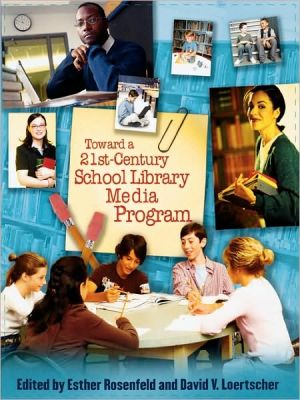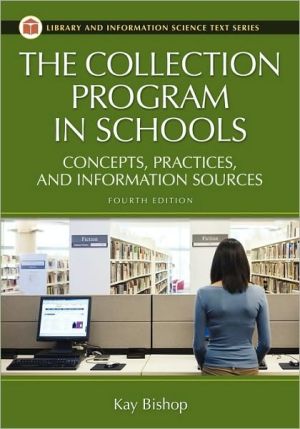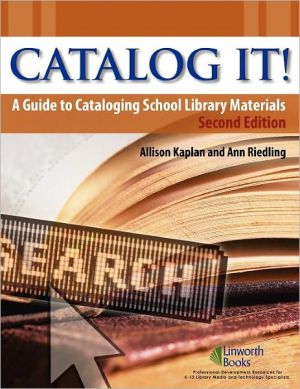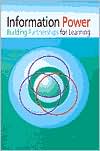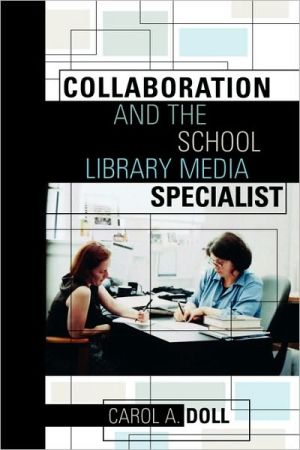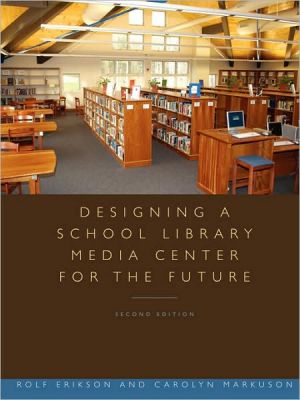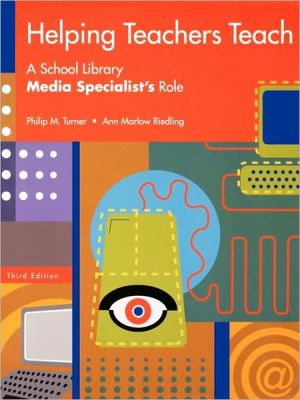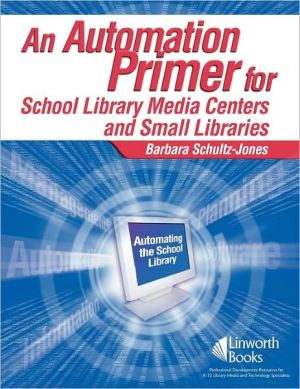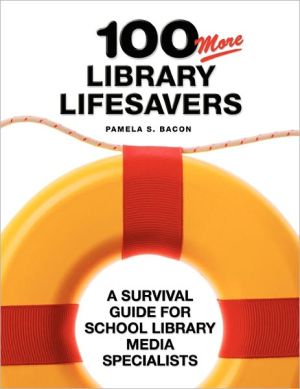Toward A 21st-Century School Library Media Program
This collection of enlightening and stimulating articles, written by some of the most important figures in school librarianship, demonstrates how teacher-librarians, classroom teachers, and administrators can work together to create a 21st century school library media program. With topics that emphasize student success, leadership, partnerships, curriculum design, collaborative planning and teaching, literacy, 21st century skills, emerging technologies, and so much more, this compendium...
Search in google:
This collection of enlightening and stimulating articles, written by some of the most important figures in school librarianship, demonstrates how teacher-librarians, classroom teachers, and administrators can work together to create a 21st century school library media program. With topics that emphasize student success, leadership, partnerships, curriculum design, collaborative planning and teaching, literacy, 21st century skills, emerging technologies, and so much more, this compendium brings together the best of the best discussions. VOYA Today's school libraries are faced with learners comfortable with and influenced by information technology, and an information environment that is rapidly changing. The purpose of this collection of articles, previously published in Teacher Librarian and VOYA, is to answer some specific questions about the role of the school library in this changing environment. Offering the thoughts and experiences of experts in the school library field, these questions are explored: What is the place of school library media centers in twenty-first-century education? How can schools respond to the needs of today's students? What type of program is needed for a successful school library program in the twenty-first century? How can the school library program become the center of education in the twenty-first century? With these questions in mind, the volume is organized into seven sections. The integration section talks about using wikis, blogs, RSS, and podcasts within the classroom. Keith McPherson explains many of these applications, emphasizing how to use them pedagogically. Patrick Jones adds his voice in the Literacy and Reading section, talking about teenage boys and reading. Doug Johnson offers his thoughts on management issues, and Joyce Valenza provides fascinating looks at students' Internet and database searching skills and practices in the 21st-Century Skills section. Each article is solid in its content and important in its voice. One could find each piece individually in back issues of the magazines, but there is much to be said for having such a rich collection of wisdom at one's fingertips. Reviewer: Susan Allen
Chapter 1 Introduction Part 2 Part I: Learning Leadership: Collaboration Chapter 3 1. Building Teaching Partnerships: The Art of Collaboration Chapter 4 2. America's Most Wanted: Teachers Who Collaborate Chapter 5 3. Teacher and Teacher-Librarian Collaboration: Moving Toward Integration Chapter 6 4. From Fixed to Flexible: Making the Journey Chapter 7 5. What Works: Gauging the Impact of Teacher and Teacher-Librarian Collaboration Chapter 8 6. Do Your Collaboration Homework Chapter 9 7. What Works: Collaborative Program Planning and Teaching Chapter 10 8. What Works: Collaboration Among School Specialists Chapter 11 9. What Works: Building Collaborative Learning Communities Part 12 Part II: Learning LeadershipL Curriculum Design and Assessment Chapter 13 10. What Flavor Is Your School Library? The Teacher-Librarian as Learning Leader Chapter 14 11. Assignments Worth the Effort: Questions Are Key Chapter 15 12. Beyond the Bird Unit Chapter 16 13. Focus on Understanding Chapter 17 14. Working Smarter: Being Strategic About Assessment and Accountability Chapter 18 15. Demystifying the Evaluation Process for Parents: Rubrics for Marking Student Research Projects Part 19 Part III: Learning Leadership: Technology Integration Chapter 20 16. You Know You're a 21st-Century Teacher-Librarian If... Chapter 21 17. The Digital School Library: A Worldwide Development and a Fascinating Challenge Chapter 22 18. The Components of Successful Technologies Chapter 23 19. The End of the Teacher-Librarian Chapter 24 20. Something Wiki This Way Comes...Are You Ready? Chapter 25 21. InfoTech: An Info-Skills Workout: Wikis and CollaborativeWriting Chapter 26 22. Literacy Links: Wikis and Student Writing Chapter 27 23. Literacy Links: Wikis and Literacy Development Chapter 28 24. Beyond Wikipedia Chapter 29 25. Literacy Links: School Library Blogging Chapter 30 26. Literacy Links: New Online Technologies for New Literacy Instruction Chapter 31 27. InfoTech: Podcasting in the School Library, Part 1: Integrating Podcasts and Vodcasts Into Teaching and Learning Chapter 32 28. InfoTech: Podcasting in the School Library, Part 2: Creating Powerful Podcasts With Your Students Chapter 33 29. InfoTech: Want to Be My Friend? What You Need to Know About Social Technologies Chapter 34 30. Open the Door and Let 'Em In Chapter 35 31. InfoTech: Flash: Engaging Learners Through Animation, Interaction, and Multimedia Chapter 36 32. Personal Computing: Keeping Up With RSS Chapter 37 33. InfoTech: Turn Up the Music With Digital Technologies Chapter 38 34. InfoTech: Open-Source Software in School Libraries Part 39 Part IV: Learning Leadership: 21st-Century Skills Chapter 40 35. Graduating Students Who Are Not Only Learned But Also Learners Chapter 41 36. Skills for the Knowledge Worker Chapter 42 37. They Might Be Gurus Chapter 43 38. The Generation Z Connection: Teaching Information Literacy to the Newest Net Generation Chapter 44 39. Analyzing Student Search Strategies: Making a Case for Integrating Information Literacy Skills Into the Curriculum Chapter 45 40. Critical Literacy: A Building Block Toward the Information Literate School Community Chapter 46 41. Literacy Links: Supporting Comprehensive Literacy Instruction in Your School: Guiding the Inclusion of Information Literacy Chapter 47 42. Literacy Links: Online Information Literacy: Moving From the Familiar to the New Part 48 Part V: Learning Leadership: Literacy and Reading Chapter 49 43. Teacher-Librarian as Literacy Leader Chapter 50 44. Literacy Links: Harry Potter and the Goblet of Motivation Chapter 51 45. Mrs. Travis's Traveling Library: A Teacher-Librarian's Attempt to Gather Data About Reading Aloud to Students Chapter 52 46. Challenging the Gender Divide: Improving Literacy for All Chapter 53 47. Overcoming the Obstacle Course: A Look at Teenage Boys and Reading Chapter 54 48. Where the Boys Are Chapter 55 49. Boy Books, Girl Books: Should We Reorganize Our School Library Collections? Chapter 56 50. Going Beyond the Debate: Using Technology and Instruction for a Balanced Reading Program Chapter 57 51. Technology Meets Literature: Meeting Authors Through Their Blogs Chapter 58 52. Literacy Links: New Literacies: Toward a Renewed Role of School Libraries Chapter 59 53. Literacy LInks: Dramatic School Library Literacy Programs Chapter 60 54. Literacy Links: Visual Literacy and School Libraries Part 61 Part VI: Learning Leadership: Partnerships Chapter 62 55. Why Should Principals Promote School Libraries? Chapter 63 56. Moving the Fence: Engaging Your Principal in Your School Library Program Chapter 64 57. Administrator's Perspective: Helping Leaders to Learn: Teaching Principals About School Libraries Chapter 65 58. Developing the Respect and Support of School Adminstrators Chapter 66 59. Beyond the Frontline: Activating New Partnerships in Support of School Libraries Chapter 67 60. Strategy: Working With Your School Board Members Chapter 68 61. Catch Them (Preservice Teachers) While You Can! Part 69 Part VII: Learning Leadership: Issues and Management Chapter 70 62. The Seven Most Critical Challenges That Face Our Profession Chapter 71 63. Using Data in the School Library Chapter 72 64. Using Focus Group Interviews to Improve Library Services for Youth Chapter 73 65. Marketing Reflections: Advocacy in Action Chapter 74 66. Are Libraries (and Librarians) Heading Toward Extinction? Chapter 75 67. How One Child Learns: The Teacher-Librarian as Evidence-Based Practitioner Chapter 76 68. Bringing Vision to Practice: Planning and Provisioning the New Library Resource Center Chapter 77 69. School Library Accessibility: The Role of Assistive Technology Chapter 78 70. Corey's Story Chapter 79 71. The School Library as Sanctuary Chapter 80 72. Safe Haven: Libraries as Safe Havens for Teens Part 81 Index Part 82 About the Editors and Contributors
\ VOYAToday's school libraries are faced with learners comfortable with and influenced by information technology, and an information environment that is rapidly changing. The purpose of this collection of articles, previously published in Teacher Librarian and VOYA, is to answer some specific questions about the role of the school library in this changing environment. Offering the thoughts and experiences of experts in the school library field, these questions are explored: What is the place of school library media centers in twenty-first-century education? How can schools respond to the needs of today's students? What type of program is needed for a successful school library program in the twenty-first century? How can the school library program become the center of education in the twenty-first century? With these questions in mind, the volume is organized into seven sections. The integration section talks about using wikis, blogs, RSS, and podcasts within the classroom. Keith McPherson explains many of these applications, emphasizing how to use them pedagogically. Patrick Jones adds his voice in the Literacy and Reading section, talking about teenage boys and reading. Doug Johnson offers his thoughts on management issues, and Joyce Valenza provides fascinating looks at students' Internet and database searching skills and practices in the 21st-Century Skills section. Each article is solid in its content and important in its voice. One could find each piece individually in back issues of the magazines, but there is much to be said for having such a rich collection of wisdom at one's fingertips. Reviewer: Susan Allen\ \
